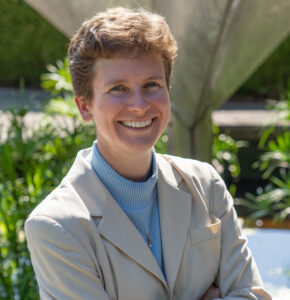
Immersive Classes: Community Effort
 My last blog was about the power of immersive classes to foster attention and presence in students. Here I want to focus on another aspect of learning that immersive classes are uniquely suited to produce: a community of learners.
My last blog was about the power of immersive classes to foster attention and presence in students. Here I want to focus on another aspect of learning that immersive classes are uniquely suited to produce: a community of learners.
Let me set the scene: A group of hungry undergraduates and I have arrived at our campsite for the night and set up camp after ten miles of trekking with full packs. Because they’re perpetually hungry and I believe in luxurious trail meals (ask me sometime about our Mediterranean quinoa and Thai curry dinners), our food bags are full: enough for ten people for five days. And because we are in bear country, we have to hang the bags from a tree limb before we sleep. Not even the most macho of the students can pull the bags up on his own. (He tried. His name was Joel.) We need every person pulling on the rope. Or, on different trip, in an Arizona slot canyon, hanging our food away from bears was not an issue, but sleeping warm on a twenty-degree night was. We all snaked into our sleeping bags and then piled together like puppies snuggling against one another for warmth, never mind that most of us were strangers to each other that first night.
Wilderness trips are by nature and necessity participatory ventures. Everyone is essential for a successful trip, at the level of making sure everyone eats and keeps safe as well as at the level of maximum enjoyment and meaning. It’s not unlike the most effective classrooms, where everyone’s voice is essential for everyone’s learning. The reality is just more obvious on the trail where you might genuinely need someone else’s warmth beside you on a cold night.
Because of the visceral need for one another in daily chores or while crossing a river, students rely on each other much more quickly than in a classroom, and their physical need quickly becomes a need for one another’s ideas at class discussion around the campfire. Students see each other as human beings, as comrades, as companions, as fellow community members, because of the way of life on the trail. They have had to be vulnerable with one another and recognize their limits, ask for help, and so when they talk with one another, they already have a foundation of some trust. Plus, when we hike with someone side by side or one in front of the other, we can say more meaningful things because we don’t have to look each other in the eye. So students listen to and learn from one another, unthreatened by one another.
I saw this on an immersive Jan-term that didn’t involve backpacking too. I took students to a monastery for three weeks for a class on the history, theology, and spirituality of monasticism. There they also had to rely on each other and on the sisters. The need was less immediate, but it was there in the shared work of washing dishes and shoveling snow. Then when a stomach bug ravaged us one by one we needed each other for basic things again. The bug hit me first, and I had to rely on the students too, just as I do on the trail. That example of dependence—of asking for help getting food or reaching out for a hand up a steep embankment—is something my students mark as invaluable. If their leader and professor is willing to throw in her lot with them, they can drop their guards and do the same with one another.
Often this reliance on one another not only persists as we return from the trail and finish the immersive course (the rest of the Jan-term) at a monastery or retreat center, but even when students are back on campus the following semester. I see them around campus and hear how they are still talking together about course ideas. This spring my Jan-term group were competing together to see if they could collectively keep their screen time below a three-hour/week average. Building a community of learners on an immersive trip builds a community of learners beyond that trip. Certainly, students in the group are that for each other, but hopefully they are also able to see their next set of classmates as a community and be willing to risk needing them, transforming that classroom and their learning experience into something more than a grade or a checkbox.
What kind of risks can you introduce in your classes that require students to need each other and so build a community of learners? Can you create a classroom that is by nature and necessity participatory? Better yet, can you begin class with an immersive experience that does this and binds students to one another in ways that will change their experience of your classroom for the rest of the semester? May you find experiences that do this, and may they transform your students’ learning.
Leave a Reply